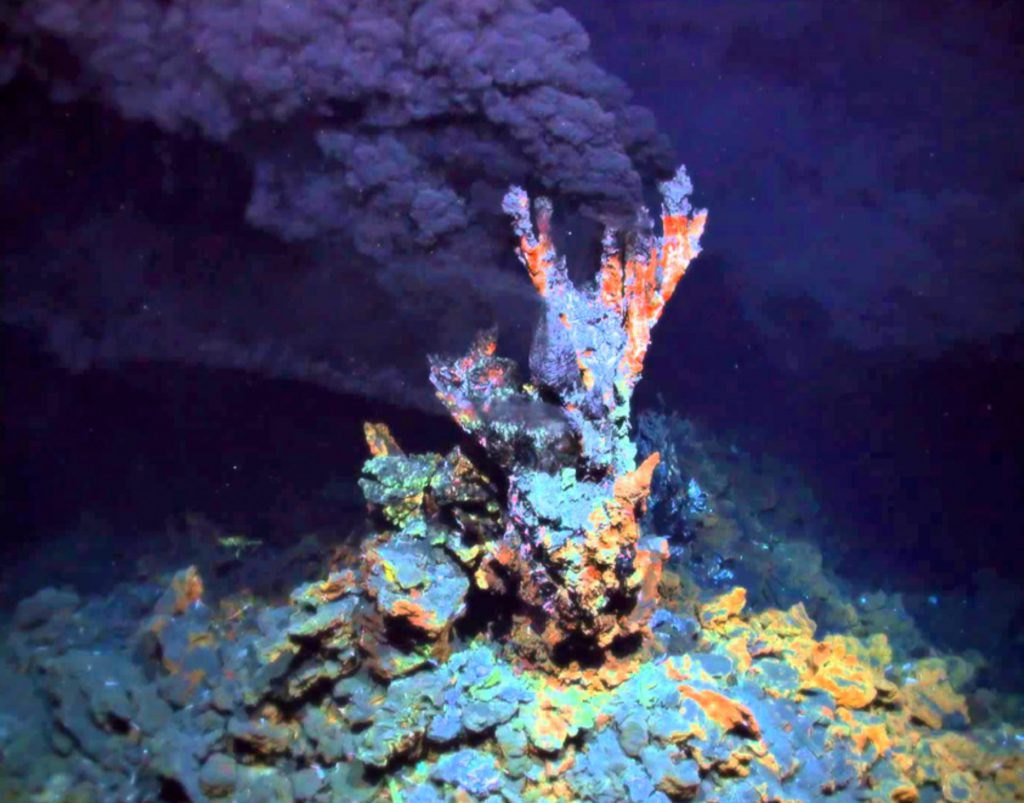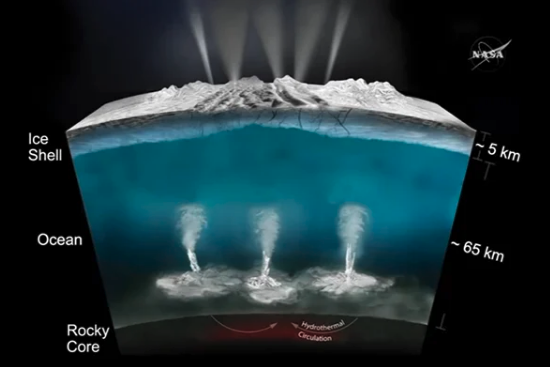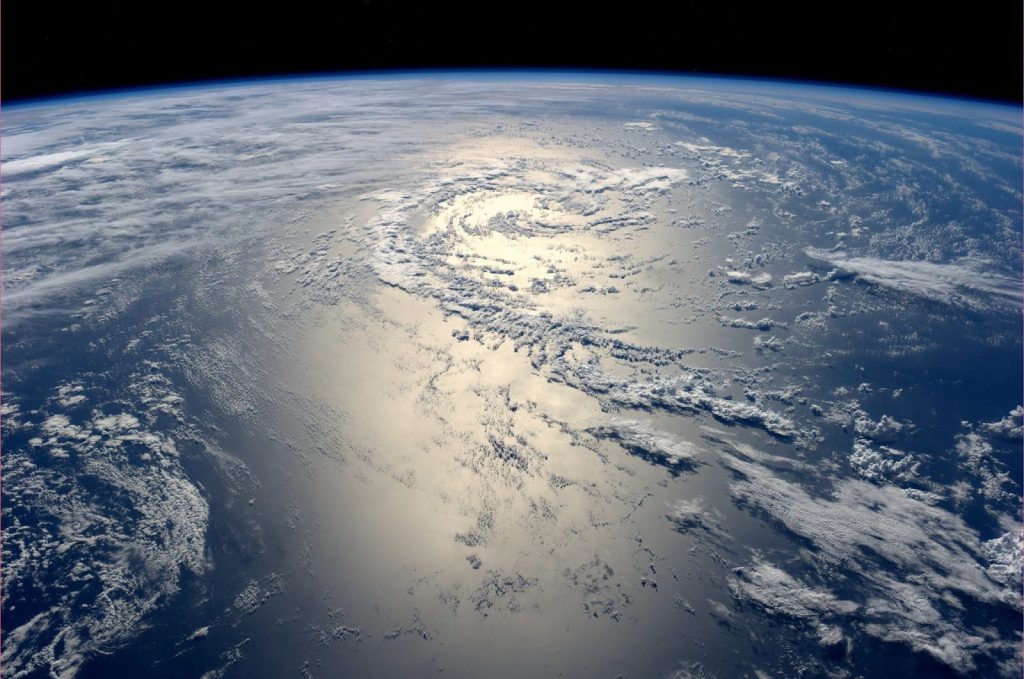Mother Sea
By Andrew Bartnik
“We are tied to the ocean. And when we go back to the sea, whether it is to sail or to watch – we are going back from whence we came…”
John F. Kennedy
Covering three quarters of the Earth’s surface and containing 97% of the planet’s water, it is unsurprising that the ocean has an immense influence on life on Earth. The ocean is the Earth’s “Great Moderator” — by sequestering enormous amounts of carbon it plays an important role in the carbon cycle and is constantly absorbing enough heat to ensure a habitable planet that maintains a stable climate. Estimates of 50-80% of Earth’s oxygen are produced by the phytoplankton that have endlessly drifted the oceans for hundreds of millions of years. The ocean harbors among the most diverse and unique ecosystems on the planet, in the forms of coral reefs and hydrothermal vent biomes — even the fallen carcasses of whales provide diverse scavenger communities a habitat and food source that sustains them for months. The dynamic nature of the hydrologic cycle is inextricably linked to and influenced by the dynamic nature of the oceans.
The first recorded observations of the ocean within human artwork dates to some 40,000 years ago. The sea has been depicted within many of our most ancient concepts — creation, destruction, adventure, birth, and death — across some of the most prominent human cultures, their mythologies separated by vast expanses of space and time, but yet all independently recognized the ocean’s dominance as a powerful source of wonder and inspiration. Since then, we have used the oceans to source food, to navigate, for trade, for art, and for inspiration. Approximately 40% of the world’s population lives within 100 kilometers of the ocean, and, as a result, the ocean provides around half of all humans their primary source of food.
Impossible to overstate, and no matter how unconsciously taken for granted in modern times, the connection between life and the ocean is inseparable. From the viewpoint of life as we know it, a healthy planet Earth is dependent on a healthy ocean. Without this Great Moderator, the planetary systems that allow for life to exist would become imbalanced, and much of life as we know it would likely cascade into extinction in an alarmingly short period of time. However, it seems that life’s connection with the ocean is more intimate than many people have imagined. As humans have begun to dissect the complex interactions between the ocean, life, and the atmosphere, we have been progressively exposed to the possibility that our origins were nurtured by the sea. One of the leading schools of thought regarding the origin of life on Earth maintains that hydrothermal vent systems beneath the ocean’s surface provided adequate chemical conditions under which abiogenesis — the natural transition to life from non-life — occurred.

Until the 1970s, hydrothermal vent systems on the ocean floors went undetected by humans. We were technologically incapable of exploring the deep sea deserts of the abyssal plains where the density of life is much lower than it is around the coasts. The abyssal plains concealed the vent systems well, and it was believed for quite some time that all of life was entirely dependent on the Sun’s rays (photosynthesis being a key driver of primary production). Even deep-sea fish inhabiting the deepest parts of the ocean were once thought to obtain their energy through what died and descended from above. Consequently, little effort was given to explore these underwater deserts.
Hydrothermal vents are dispersed along the tectonic plate boundaries throughout the world’s oceans. They exist kilometers down on the seafloor, far below the influence of the Sun’s rays. At these depths, the pressures are immense, cold seawater is thrust into contact with superheated water from the vents, nutrients and food in the surrounding seawater is scarce, and one might expect these areas to be devoid of life. Yet, we find that life not only exists, but thrives. Through the dissolved chemicals that result from the interaction between the rocks in Earth’s crust and heated seawater, hydrothermal systems support complex ecosystems from extremophile bacteria to worms, shrimp, eels, crabs, and even fish. Like oases in the desert, these were the first known self-sustaining ecosystems to exist beyond the immediate influence of the Sun’s rays, and pushed the receding boundary of conditions thought to be suitable for life back even further.
Our Abiotic Origins
In the 1950s, Stanley Miller and his graduate student, Harold Urey, conducted an experiment that simulated the conditions thought to exist within the atmosphere of the early Earth. They used a series of flasks containing simulated seawater and the gases of this simulated atmosphere along with artificial evaporation, condensation, and sparks to simulate lightning as energy inputs. After letting the experiment run for a day, chemical analysis of the resulting discharge displayed the presence of amino acids. Five of the twenty amino acids known to be essential for life were present in the flask, and after continuing to let the experiment run, over twenty amino acids were discovered in the flask.
Although only a first step towards proving life’s abiotic origins, the Miller-Urey experiment, which has now been redone myriad times by other researchers and using different conditions, implies that life originated through a series of chemical reactions in a process called abiogenesis. Abiogenesis dictates that once the first molecules of proto-life established a semi-reliable, self-replicating process, then biological evolution took over, and now, billions of years later, has resulted in the diversity of life we experience today. Today, a considerable amount of research on the origins of life is dedicated to “bridging the gap” between chemistry and biology in hopes of further illuminating the roots of life’s origin.
“Even if you never have the chance to see or touch the ocean, it touches you with every breath you take, every drop of water you drink, every bite you consume. Everyone, everywhere is inextricably connected to and utterly dependent upon the existence of the sea.”
Sylvia Earle, The World Is Blue: How Our Fate and the Ocean’s Are One, 2010
Building off of Miller and Urey’s experiment, it has been shown that amino acid synthesis is favorable under hydrothermal conditions. Not only have amino acids been produced in hydrothermal simulations in the laboratory, but research conducted in 2018 provides evidence that the amino acid tryptophan is synthesized abiotically at a hydrothermal system along the mid-Atlantic ridge called Lost City. Lost City is an especially unique hydrothermal system in that seawater is not actually in contact with lava or magma beneath the seafloor. Instead, the heat produced at Lost City is due to a chemical reaction between seawater and rocks in the mantle. Through a process called serpentinization – which encompasses a cluster of reactions that involve the hydration of ultramafic rocks found in the Earth’s mantle – alkaline conditions, heat energy, and molecular hydrogen are produced at Lost City. These ingredients lead to favorable conditions for amino acid synthesis and may demonstrate the first step towards the abiotic origins of life.
Extraterrestrial Oceans
There was a time that the search for life beyond earth was constrained to the concept of the Goldilocks Zone, which refers to the narrow band of space sufficiently far from a star such that liquid water does not boil away, yet not so far that surface water would freeze-over (the zone is based solely on orbital dynamics, so it often neglects the effects of atmospheres or internal radiation). It has since been discovered that liquid water can exist far outside this constraint — within subsurface oceans. The gravitational forces of gas giant planets can sufficiently heat their satellites through tidal forces, despite being many times further away from the Sun than the outer boundary of the traditional definition of the Goldilocks Zone.
There is the sea, vast and spacious, teeming with creatures beyond number— living things both large and small.
Psalms 104:25
Beneath the kilometers-thick ice shell of Saturn’s moon, Enceladus, lies a salty, global, subsurface liquid water ocean. Intriguingly, adequately sized silica grains along with the presence of molecular hydrogen suggest that Enceladus may be hydrothermally active, while the presence of organic molecules in its plumes tease astrobiologists and planetary scientists with perhaps the best place to look for life beyond Earth. Similarly, Europa, a moon of Jupiter, is home to a subsurface global liquid water ocean — it has been estimated that Europa’s ocean may be some 10 times deeper than the Challenger Deep and may hold twice as much water as Earth’s oceans.

Beyond Europa and Enceladus, Ganymede and Callisto (also moons of Jupiter) are hypothesized to host subsurface oceans. Saturn’s moon, Titan, hosts liquid methane lakes, rivers, and even clouds and rain that partake in an analogous form of Earth’s water cycle which is called a “methanological cycle”. Titan is also hypothesized to hold liquid water oceans underneath its alien hydrosphere of hydrocarbons. Even the dwarf planets, Pluto and Ceres may potentially hide sub-surface, liquid-water oceans (though the evidence supporting this potential is currently limited).
The blue planet, Earth, was once thought to be unique due to possessing liquid water. However, upon closer inspection of Earth’s neighbors in the solar system, it’s been discovered that our water-world is not companionless. Not only do some satellites of the larger worlds have subsurface oceans, but Venus may once have had an ocean and even Mars is hypothesized to have had an ocean that once covered maybe as much as one-third of its surface. Of course, once the atmosphere of Mars was stripped away, so too was its exposed liquid water (perhaps driving any ancient life there to extinction).
“Moving in fascination over the deep-sea he could not enter, man found ways to probe its depths, he let down nets to capture its life, he invented mechanical eyes and ears that could re-create for his senses a world long lost, but a world that, in the deepest part of his subconscious mind, he had never wholly forgotten”
Rachel Carson, The Sea Around Us, 1951
It is reasonable to contemplate the possibility that life’s origin is not a singular event, but rather an ongoing process perhaps nurtured by the ocean. Perhaps sufficient interaction between a bodies’ active lithosphere and its salty ocean water is enough to catalyze the synthesis of amino acids, followed by the myriad of biochemical interactions that lead to the first cell, and eventually to microbial life.

Such a scenario sounds remarkably easy, and while diverse filters that prevent life’s genesis should be expected, it may be discovered that marine microbial life is relatively common throughout the cosmos, and that the apparent absence of life in the universe despite its seemingly ample opportunity to arise, or Fermi’s Paradox, is addressed by great filters that prevent further evolution to more complex organisms. If microbial life is first discovered on an ocean world, the most reliable indicator for assessing the habitability of a system — a cosmic beacon —will then become the presence of a liquid ocean. It is reasonable to assume that future telescopes, tasked with searching for signatures of life, will be calibrated to search for an “ocean glint”— variations in a bodies’ albedo (a measure of an object’s reflectivity) — and will be able to detect the presence of an ocean on planets far beyond our solar system.
A discovery of this magnitude would radically transform our relationship with our own ocean. If oceans do prove to be a cosmic beacon of life, future generations will hopefully be inclined to treat their own ocean in a delicate, more sustainable manner. For now, our own solar system hosts many ocean worlds for exploring the limits of liquid water and the conditions under which life can thrive in oceans. This watery nest of life will remind us of our connection to the natural world, the processes that shape it, and the realization that all of life as we know it shares the same all-encompassing mother sea.
The sea, once it casts its spell, holds one in its net of wonder forever.
Jacques Cousteau
Andrew Bartnik is a graduate of the University of Arkansas and a Research Associate for the BMSIS Young Scientist Program. He is working with Dr. Jihua Hao on the synthesis of amino acids on Saturn’s moon, Enceladus.
